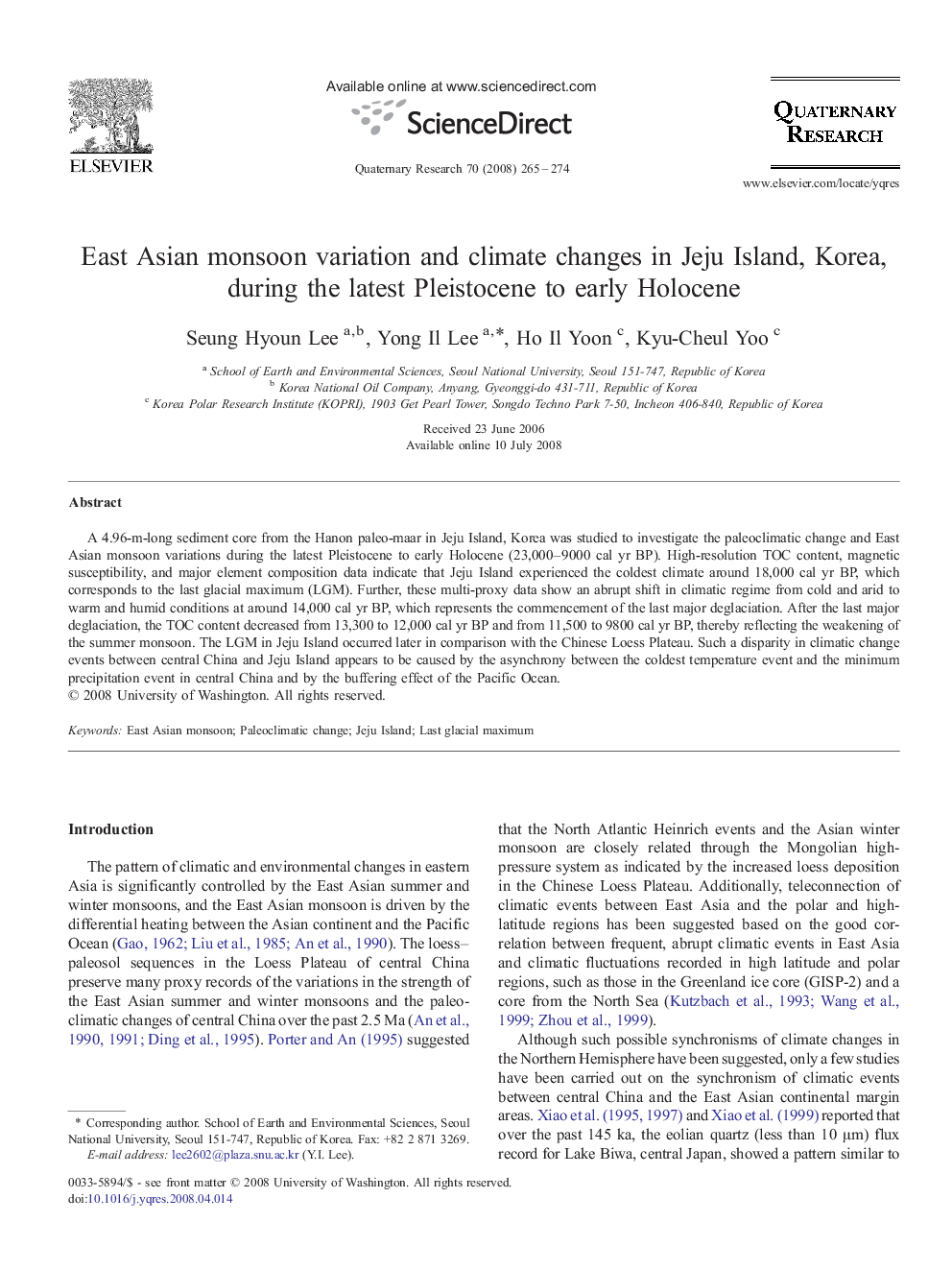| کد مقاله | کد نشریه | سال انتشار | مقاله انگلیسی | نسخه تمام متن |
|---|---|---|---|---|
| 1045708 | 944829 | 2008 | 10 صفحه PDF | دانلود رایگان |

A 4.96-m-long sediment core from the Hanon paleo-maar in Jeju Island, Korea was studied to investigate the paleoclimatic change and East Asian monsoon variations during the latest Pleistocene to early Holocene (23,000–9000 cal yr BP). High-resolution TOC content, magnetic susceptibility, and major element composition data indicate that Jeju Island experienced the coldest climate around 18,000 cal yr BP, which corresponds to the last glacial maximum (LGM). Further, these multi-proxy data show an abrupt shift in climatic regime from cold and arid to warm and humid conditions at around 14,000 cal yr BP, which represents the commencement of the last major deglaciation. After the last major deglaciation, the TOC content decreased from 13,300 to 12,000 cal yr BP and from 11,500 to 9800 cal yr BP, thereby reflecting the weakening of the summer monsoon. The LGM in Jeju Island occurred later in comparison with the Chinese Loess Plateau. Such a disparity in climatic change events between central China and Jeju Island appears to be caused by the asynchrony between the coldest temperature event and the minimum precipitation event in central China and by the buffering effect of the Pacific Ocean.
Journal: Quaternary Research - Volume 70, Issue 2, September 2008, Pages 265–274